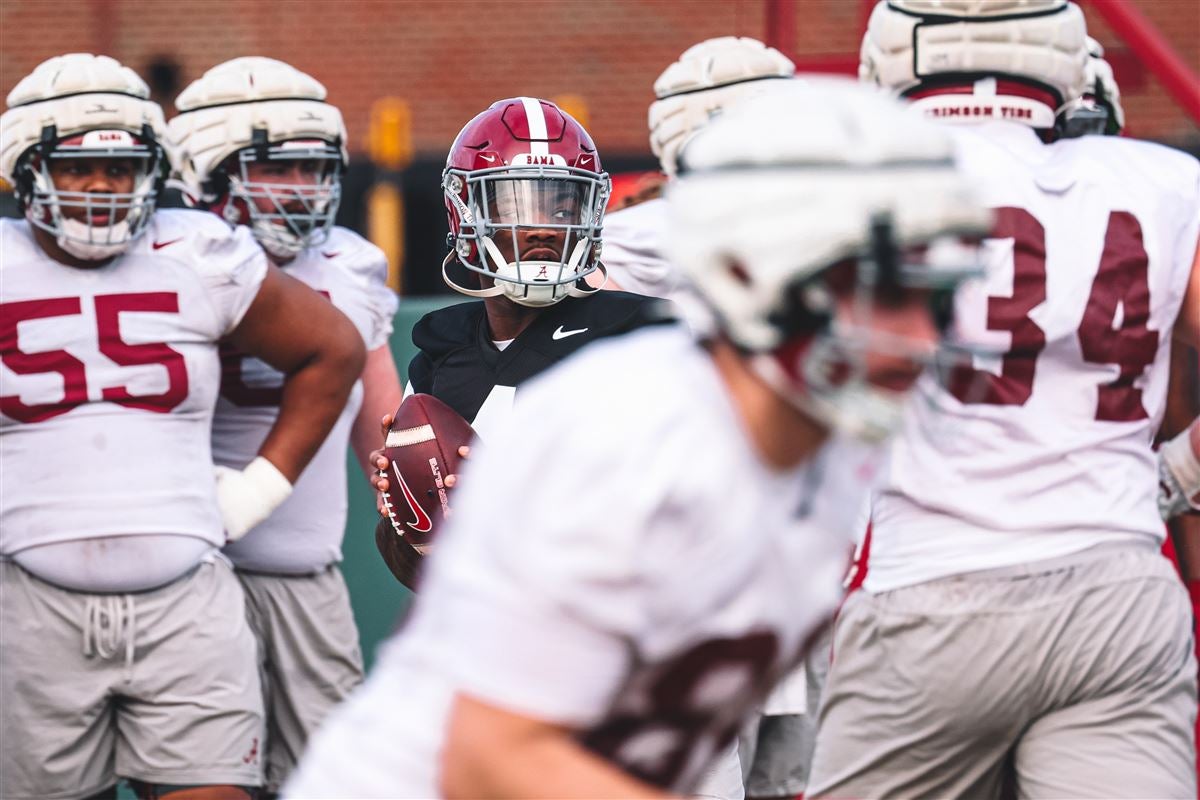
TUSCALOOSA, Ala. — There are a lot of new things about the Alabama football program these days.
New coaches. Some new players. And, thanks to a potential new rule, new ways for players to receive plays from their coaches.
Last Friday, NCAA Football Rules Committee proposed, among other things, a rule that would allow the use coach-to-player helmet communications, a practice that’s already used in the NFL.
Only one player would have access to the helmet radio, identified with a green dot on their helmet. Like in the NFL, communication would turn off when the play clock hits 15 seconds or at the snap — whichever comes first.
The rule, limited only to FBS teams for now, could go into effect for the 2024 season if the NCAA Playing Rules Oversight Panel approves it on April 18. On Monday, newly-hired Alabama coach Kalen DeBoer revealed that his team will use it this spring.
“We were doing it today,” DeBoer said following Alabama’s first spring practice on Monday evening. “We had it out there. With supply and demand across the country, we aren’t able to have as many as what the max would be.
“But we had a couple quarterbacks with that in.”
NFL quarterbacks have talked with coaches via helmet communications for 30 years, and defensive players have done so since 2008. This new technology has been discussed by both coaches and the rules committee for several years.
“The use of technology has been on the committee’s agenda for several years, and the time is right to introduce it in NCAA football,” A.J. Edds, co-chair of the committee, said in an NCAA release last Friday.
“FBS conferences have partnered together to ensure the consistent application and work through the details of the technical requirements for implementation.”
Many coaches are expected to experiment with the technology this spring. Alabama’s spring practices run Monday through the A-Day Spring Game on April 13. DeBoer said Monday there wasn’t any immediate feedback to using the new system.
“I haven’t heard any feedback yet,” he said. “Early on, there were a couple of times it was hard to hear, one way or another. I don’t think it was too soft. It was actually because it was too loud. But I’m sure that will get tested in our stadium at some point.”
DeBoer added that the new technology is largely a good thing for college football.
“I think there’s a lot of reasons for it,” he said. “I don’t know that it answers all the concerns you might have when it comes to some of the things that people will say it automatically fixes — maybe sign-stealing and things like that.
“I think there are other ways it could go the other way, just with being intentional and trying to get a call and being able to echo it through your defensive headset. I could go on and on with that.”
Michigan, which beat the DeBoer-led Washington Huskies in the College Football Playoff national championship game in January, was embroiled in a sign-stealing scandal this past season. Former head coach Jim Harbaugh — he’s since left for the Los Angeles Chargers — was suspended three games by the Big Ten Conference.
Other new technology proposals by the NCAA Football Rules Committee included using tablets to view in-game video, including the broadcast feed and all-22 camera angles from the coach’s sideline and coach’s end zone. Teams could have up to 18 active tablets for use, and all team personnel could view the tablets during a game.
But the helmet communications was the big one, and so far, after one practice, DeBoer was encourage by the early returns to trying the new technology.
“It was good,” he said. “I think the quarterbacks were just getting used to it, I saw them a couple of times putting their hand up to their helmet and listening, but for the most part it seemed clean.”
Cody Goodwin covers the Alabama Crimson Tide for 247Sports. Follow him on Twitter at @codygoodwin.
